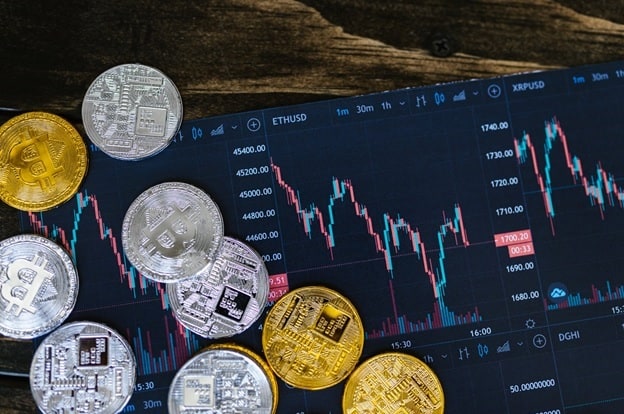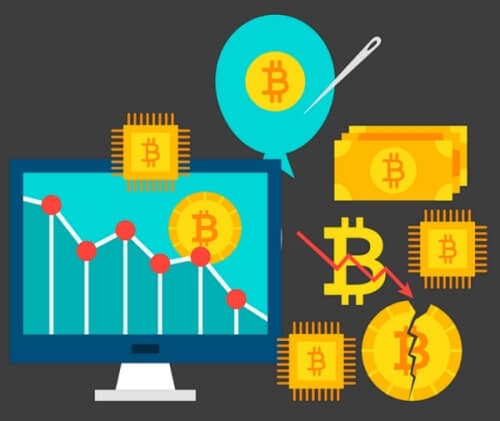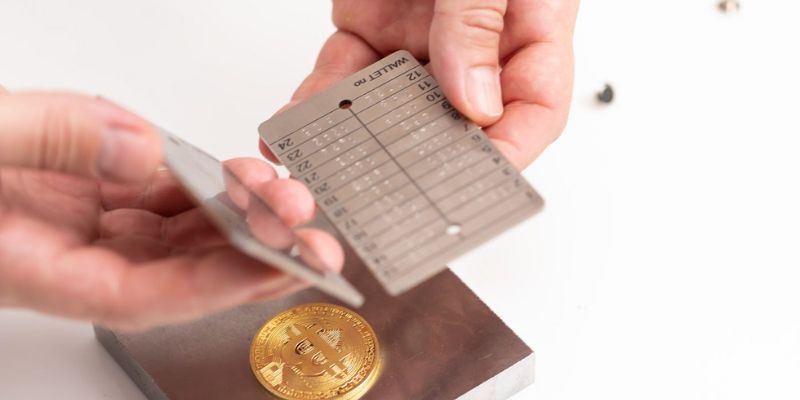Navigating the maze of crypto exchanges can be daunting. Think of it as looking for the right partner who can tackle the wild world of cryptocurrency with you. Tons of choices, plenty of promises, and you’re at the crossroads, trying to make the best pick. How to choose a crypto exchange becomes not just a question, but a mission for your financial safety and satisfaction. I’ve cut through the noise and laid out the gold standard for your selection. From nailing down bulletproof security to snagging the best rates and smooth trading, let’s dive into making a choice that sets you up for success.
Understanding Cryptocurrency Exchange Criteria and Security
Evaluating Exchange Criteria: What to Look For
Choosing a crypto platform can be tricky. There’s a lot to think about. How do you pick the best one? It comes down to match your needs with what the platform offers.
First, let’s talk fees. They can take a big bite out of your wallet if you’re not careful. So, compare the fees of different platforms before you jump in. Lower fees save you money. But don’t let fees be the only thing you look at.
Next up is user experience. No one likes a clumsy, hard-to-use website. So make sure the platform feels right. It should be easy to buy and sell. If you’re always lost on the site, it’s a no-go.
Liquidity is another big one. It means how fast you can sell your crypto without affecting the price. High liquidity is good. It means you’re more likely to sell at the price you want.
Now let’s check their reputation. This is like seeing what other people think. And don’t forget about support. Good customer support can be a lifesaver when you hit a snag.
Okay, so you’ve also got to think about what coins they support. If they don’t have your coin, you can’t trade. Simple as that.
And then there’s safety, which takes us to our next point.
Security Measures: Protecting Your Assets
Security on crypto platforms is super important. We’re talking about your money, after all! What should you watch for?
Look for two-factor authentication (2FA). This takes login safety up a notch. It’s like a double lock on your account, so hackers have a tougher time breaking in.
Encryption is another key player. It scrambles your data so only the right people can read it.
Also, check the insurance policy. This can cover you if the exchange gets hacked. It’s like a safety net for your coins.
And just like a castle has a moat, crypto exchanges use cold storage. This means they keep most of the assets offline. So it’s harder for bad guys to get to them.
Keep in mind, the crypto world can be a wild place. New laws come up, so the exchange should be on top of these, that’s regulatory compliance.
Oh, and one last thing. KYC, or know-your-client, requirements mean proving who you are. It helps keep things legit and safe for everyone.
To wrap it up, when you’re selecting a cryptocurrency platform, think fees, feels, flow, and fortress. Or, in other words, look at costs, how easy it is to use, cash flow, and how tough it is for the bad guys to get in. Get those right, and you’re on your way to choosing a great crypto exchange.
Assessing Fees, User Experience, and Liquidity
Decoding Fee Structures for Cost-Efficient Trading
When you’re selecting a cryptocurrency platform, you must look at the fees. Each trade can eat into your profits. So, finding low fees is key. Ask yourself, “What types of fees does this platform charge?” You’ll find they often charge for trades, withdrawals, and deposits.
These fees vary widely between exchanges. Some use a flat rate, others a percentage. Some even offer zero fees for certain trades. Always check the fine print. A low fee can mean more money stays in your pocket.
But, low fees shouldn’t be your only focus. Security is just as crucial. Make sure the platform has strong security measures. You want to keep your coins safe, after all.
User Experience and Liquidity: Ensuring Smooth Transactions
Now, let’s talk about user experience in crypto trading. Is the platform easy to use? Can you find features fast? Are trades quick and trouble-free? Good user experience means less stress for you. Look for clear design and helpful guides. Customer support matters, too. They should be there when you need answers.
Liquidity is another big deal. It means how simple it is to buy or sell without affecting the price. High liquidity allows you to do that. It makes trading quick and efficient. More players in the market mean better liquidity. And that’s what you want.
So when you’re looking at the liquidity of cryptocurrency exchanges, think about trading volume. More volume means better liquidity. It means a better chance of trades at prices you expect.
In short, you want a crypto exchange that’s easy to use, has high liquidity, and low fees. Check these boxes, and you’re on your way to smooth and cost-effective trading. Remember, these factors can vary based on where you live. Be sure to consider any geographical restrictions in crypto trading that may apply to you.
The right platform with the right mix makes all the difference. It lets you focus on smart trading, without unwelcome surprises. So take the time to compare crypto trading platforms. Your future self will thank you for it!
Comparing Platform Features and Regulatory Compliance
Supported Cryptocurrencies and Trading Volume
When you start selecting a cryptocurrency platform, check what coins it supports. You’ll want a range of coins, to fit all your trade needs. It’s not just about Bitcoin anymore. Look for altcoins too, as they might be the next big win.
Good platforms list lots of coins. But, trading volume is just as key. It means how much trade happens on the platform in a time frame. High volume means it’s easier to trade. Your orders fill fast because more people are buying and selling.
Let’s get into detail. A platform with high volume in your coin gives better prices. You can buy or sell at market rates. With low volume, you could pay more or sell for less. That’s why both supported coins and volume count.
Ensuring Compliance and Reputation in Your Selection
We all want a safe place for our money. That’s where exchange reputation and compliance come in. Are they following the rules? If not, it could be a danger zone for your cash. Stick with places that follow the law. They should have clear info on legal stuff.
Check out their track record too. Long-lasting exchanges often do things right. New ones can be good, but they still have to prove themselves. Make sure they’ve got good user feedback.
Insurance policies matter too. They should protect your money if something bad happens. User experience is important as well. You want a site that’s easy to use. No one likes a headache when dealing with money.
Security measures? A big deal. Protecting your assets is top priority. Look at their security history. Hacks or issues mean stay away. It’s your money at stake.
Lastly, the account verification process tells you about their KYC game. Tough KYC means they care about security and legal stuff. It can be a hassle but it’s a good sign.
When picking a crypto exchange, think about your needs and safety. It’s a balance of finding great options and staying secure. That’s your foolproof guide to trading with peace of mind.
Additional Exchange Considerations for Traders
Decentralized vs Centralized Exchanges: Understanding the Difference
Choosing right needs you to know two main types. Centralized or “regular” ones are like banks. They keep your money, and you trust them. Bigger ones offer more coins and strong support. Yet, if they get hacked, you might lose your coins. Decentralized, or “peer-to-peer,” platforms let you deal directly with others. They don’t hold your coins, so less risk there. But, they can be harder to use, and offer fewer coins.
When selecting a cryptocurrency platform, look at how they work. Do they match your trade style? Trust your gut – if it seems hard, it might not be for you. Centralized ones may be easier to start with. Plus, they are more common, so finding reviews and getting help is easier.
Account Verification and Privacy Concerns in Crypto Trading
Privacy worries many crypto users. Know-Your-Customer (KYC) rules help stop bad stuff like money laundering. This means exchanges ask for your personal info. Info like your ID, address, and maybe more. It’s a pain, but it’s for keeping everyone safe. Think about privacy when picking a place to trade. If keeping anonymous is key to you, then some decentralized places might not ask for much info.
However, remember, places that take less info might also be less safe. They might not follow the rules and laws. Good security is a must. So, check if the place has insurance policies in case they get hacked.
All apps should work smooth and easy. User-friendly means you trade without getting a headache. Also, make sure the place supports lots of different coins. More coins mean more chances to trade.
Every place will also have rules about who can use it. These are geographical restrictions. They can be a hassle if you travel a lot or live in certain places. Lastly, check how you can put in and take out your money. Look for good withdrawal and deposit methods that work best for you.
Customer support is also key. Like a buddy who knows loads about coins. They should help fast when problems pop up. User reviews and ratings can tell you how they do.
Choose wisely, take your time, and you’ll pick a platform that feels just right. Remember, your coins, your choice.
In this post, we’ve tackled how to choose a crypto exchange that fits your needs. We started by explaining what to look for in an exchange and how to make sure your assets stay safe. We then moved on to break down the fees, nail down a good user experience, and find an exchange with enough trade to keep things moving.
Next, we compared platform features and checked that they follow the rules. Lastly, we looked at the pros and cons of different types of exchanges and talked about keeping your info safe.
My final take? Picking the right exchange is key for your peace of mind and success in crypto trading. Choose wisely, stay safe, and keep the costs in mind. Happy trading!
Q&A :
What factors should I consider when selecting a cryptocurrency exchange?
When choosing a crypto exchange, it’s important to consider factors such as security measures, user interface, fees and charges, supported cryptocurrencies, liquidity levels, and customer support quality. Also, look into the exchange’s reputation, geographical restrictions, and whether it complies with relevant regulations.
How important are security features in a crypto exchange?
Security is paramount when dealing with digital assets. Ensure the exchange employs robust security measures like two-factor authentication (2FA), cold storage options, and insurance policies against theft or hacking. It’s also prudent to research past incidents and how the exchange handled them.
What role do fees play in choosing a crypto exchange?
Fees can significantly impact your trading profitability. Compare the fee structures of various exchanges, including deposit, withdrawal, and trading fees. Also, check for any hidden fees and how the fee structure scales with the volume of trades.
Can liquidity affect my trading on a crypto exchange?
Liquidity determines how easily you can buy or sell cryptocurrencies without affecting the market price. High liquidity means tighter spreads and faster transaction times. Look for exchanges with high trading volumes to ensure better liquidity.
How do I assess the user experience of a crypto exchange?
A user-friendly interface is key for efficient trading, especially for beginners. Look for exchanges that offer a smooth sign-up process, easy-to-navigate platform, informative charts, and mobile app availability. Reading user reviews and testing out the platform via a demo account (if available) can provide insights into the user experience.




